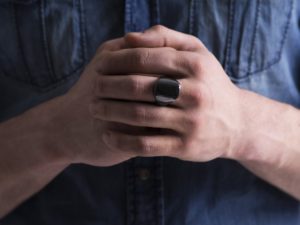This Week’s Thrive In Five Is About Wearable Technology and What Data Is Important to Monitor For Health and wellbeing
This week I want to talk a bit about a piece of wearable technology I use, but more importantly, the stats I get from it and why I monitor these things. Now, many of you will know I happen to use an Oura Ring. Now we don’t have any affiliation with them. So I don’t have any referral code or discount code, I make no money from whether you buy this thing or not. So for balance I’ll add that you can get the data I get from this from other devices like the whoop band, for example, Garmin devices also provide similar information. So this is about Oura Ring, because that’s what I use, but it’s not in any way a plug for the Oura Ring. You’ll feel free to go out and use whatever kind of wearable tech you like.
Health Data Provided By Wearable Technology
So the device that I use is the Ring and the I get a lot of data but the data I pay most attention to is:
Sleep Data
I look at my total sleep. My little rule is some of you will know, it needs to start with a seven. Seven hours in a minute, I’m going to be just fine, seven hours and 59 minutes, I’m going to be great. So it needs to start with seven.
I track my total sleep. I’ll then look at the composition of that sleep. So how much deep sleep did I get, in particular, and how much REM sleep did I get. Deep sleep being the restorative, anabolic kind of sleep we get and REM sleep, being more about, downloading memories and consolidating learning from the day. It’s kind of the, the defrag and the sorting, if you like. So I’ll check those three data points.
Readiness Score and Heart Rate Variability
I also look at my readiness score, which the ring provides. More specifically I like to look at my HRV. HRV stands for heart rate variability, and it’s essentially the interbeat interval between heartbeats. So a healthy heart will not have a consistent interbeat interval. So it won’t go, badum, badum, badum, badum, there’ll be tiny, indiscernible to the naked eye, changes in the interbeat interval. You can pick that up with wearable tech and that’s what we call HRV. HRV is a really good indicator of nervous system recovery.
Main data points to review from your Wearable Technology
So the main data points I look at are my HRV, my total sleep, my REM sleep and my deep sleep.
There is other data in there I may pay attention to, for example, my body temperature. Body temperature can be used for tracking, menstruation cycles for instance, or linking that with perimenopause symptoms. Also body temperature is quite a good indicator of whether you’re getting sick or whether you’re fighting something. So I may take a look at that if I’m feeling a bit below par as well.
Trust your gut
Whatever device you use, they are some really interesting data points to monitor. And just for a final bit of balance, you don’t necessarily need a bit of wearable tech. Sometimes it’s really good to wake up and think, how do I feel? And then go off the back of that kind of intuition, rather than relying on data. So I tend to do the two I’ll wake up and use my intuition and tune into my body, but I’ll also consult the data. I can use that data as well, to measure the effectiveness of lifestyle changes I might be making.
So that’s it for me this week as always stay healthy. I hope that’s been useful give it a go and let us know how you get on!
If you’re interested in finding out what your health IQ is, take the Health IQ test to find out, and get a free personalised 39-page report built around our six signals, which are sleep, mental health, energy, body composition, digestion, and fitness.
We run a regular schedule of Wellbeing Webinars that are free to join. You may also enjoy our podcast Remove The Guesswork.


